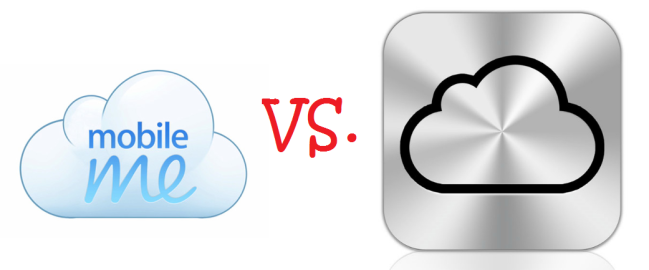 Apple introduced iCloud with much fanfare yesterday, as the cloud computing solution has been its much-anticipated answer to MobileMe’s faults as well as a remote iTunes feature. The general impression seems to be that we were expecting more, a game-changer, and instead what we’re seeing is a stepping stone toward a more efficient and flaw-free system. While Apple has yet to release full details on the new service, it’s the unknowns that are causing skeptics to wonder how different iCloud and the soon-defunct MobileMe really are.
Apple introduced iCloud with much fanfare yesterday, as the cloud computing solution has been its much-anticipated answer to MobileMe’s faults as well as a remote iTunes feature. The general impression seems to be that we were expecting more, a game-changer, and instead what we’re seeing is a stepping stone toward a more efficient and flaw-free system. While Apple has yet to release full details on the new service, it’s the unknowns that are causing skeptics to wonder how different iCloud and the soon-defunct MobileMe really are.
Price
MobileMe: $99 a year (20 GB, 200 GB of monthly data transfer) or $149 a year for a Family Pack (five users; one individual account of 20 GB and five supplementary with 5GB)
iCloud: 5GB for Free (music, apps, books, and Photo Streams don’t count toward your free storage); there is a $25 annual fee to sync music not bought via iTunes
Outside Apple compatibility
MobileMe: Could be used on Windows PCs via iTunes and MobileMe Control Panel for Windows.
iCloud: Will work with a PC with Windows Vista or Windows 7 and iTunes 10.3. From what we’ve heard thus far, iCloud will not offer storage for Microsoft Office documents or an option for storing and syncing outside files. Anything you’ve got stored in Flickr, Dropbox, Picasa, CloudMe, Google Docs, etc – will be staying there unless users personally transfer it over manually. We all know why this is a frustration: Say you’re currently an iPhone, iPad, and Mac user, but at some point you’re tempted by an Android phone. Apple’s trapped your data within its walled garden. A big part of iCloud’s function will be lost on you unless you remain a loyal Apple consumer. Not to say Apple’s the only one guilty of such closed-ecosystem tactics, but it doesn’t make it any fairer to users.
Productivity applications
MobileMe: Address book and calendar, iDisk (a 20GB online storage account), iWeb Publish, MobileMe Mail, MobileMe Calendar Beta
iCloud: Documents, Mail (me.com email account), Calendar, Contacts, as well as all your previously purchased iOS apps (wirelessly pushed to iCloud)
Sharing
MobileMe: Users could select iDisk’s public folder to share files. This space could also be password protected to keep content secure. The other option was to select files and using the me.com/idisk or the iDisk iPhone app and selecting the Share icon. This would create a unique, password protected link to the file that you could send via the me.com email client.
iCloud: Sharing, most specifically for documents, hasn’t been detailed yet. We do know that as it currently stands, users will not be able to share music via iCloud. It’s also unclear how Apple intends to transfer their files from iDisk to iCloud and it’s entirely possible this will have to be done manually (Apple has said that email, contacts, calendar, and bookmarks will be shifted to iCloud).
Photos
MobileMe: The MobileMe Gallery stored photos uploaded at me.com, synced by iPhoto or Aperture, or uploaded from your iOS device. There was also a specific email address for uploading photos and videos, and galleries could be public or private or even password-protected. You could send photos directly from iPhones or iPod touches.
Users had hang-ups with difference versions of Aperture though. In order to use Aperture 2 or later and publish content to MobileMe Galleries, all versions of the software had to be the same. Not doing so could result in duplicated galleries or missing photos.
iCloud: Photo Stream offers a constantly updated collection of your most recent 1,000 photos and new photos are stored for 30 days. Your Mac or PC will automatically grab and store all your photos taken with any iOS device once Photo Stream is activated there.


